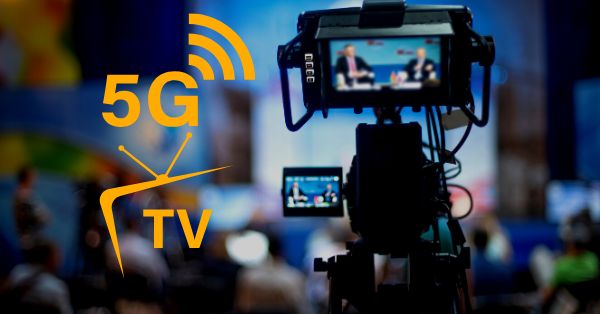5G’s Role in TV Broadcasting’s Future The FCC’s recent decision to award a Massachusetts low-power television network a six-month experimental license illuminates the potential of 5G in revolutionizing TV broadcasting. This license permits the network to relay video and additional data through the UHF section, which falls within the 300 megahertz to 3 gigahertz range of the 5G broadcasting norm.
The Drive for Efficient Bandwidth Use By leveraging TV hardware and spectrum to satiate the growing hunger for Internet video streaming, there is an opportunity to alleviate some strain from cellular networks. This not only paves the way for improved network efficiencies but also unlocks fresh commercial possibilities. Notably, Sinclair Broadcasting Group and Czech telecom CRA have ventured into this space earlier, the former securing a similar license in 2021 and the latter commencing broadcasts to mobile devices.
Enhancing Emergency Communications Frank Cospidas of XGen Networks, which is operating the television station under the new license alongside Milachi Media, envisions a broader application. Beyond simple broadcasts, they aim to establish a comprehensive data platform geared towards first responders. This could lead to a scenario where emergency personnel receive critical information, such as drone footage, via private 5G broadcasts even when regular cellular networks falter.
The Interplay of Sports Broadcasting and 5G The realm of sports broadcasting could also benefit immensely from this convergence. Imagine offloading the transmission of a massive sporting event to the VHF band, thereby easing congestion on other 5G frequency bands.
5G and the Television Broadcasting Landscape Industry analyst, Jeff Kagan from Atlanta, emphasizes the transformative power of 5G across various sectors. With Cable TV grappling with the rise of internet streaming and subsequent challenges, it’s pivotal for companies to discover innovative avenues to engage viewers, and 5G presents itself as a promising contender.
ATSC 3.0 vs. 5G: A Dynamic Landscape While 5G beckons as a futuristic broadcast medium, major U.S. broadcasters are exploring the switch to ATSC 3.0 – a cutting-edge Internet protocol television standard introduced during the 2018 Winter Olympics. Though offering superior audio and 4K image resolution, its stability and capability might not rival TV over 5G, opines Cospidas.
Where 5G Holds the Advantage The uniqueness of 5G lies in its accessibility. Unlike ATSC 3.0, 5G can be received on mobile phones and tablets, offering broader outreach. For networks like XGen targeting niche audiences, 5G can be a game-changer, especially when delivering specialized services for harder-to-reach demographics.
The Future of Broadcasting: Flexibility and Convergence Future broadcasting may encompass dynamic decisions, choosing the best method based on user location and content demand. As Cospidas highlights, there are already applications facilitating such choices between broadcast or individual 5G transmissions.
Sinclair’s Exploration into Convergence Interestingly, U.S. Sinclair Broadcast Group’s initial exploration into the convergence of ATSC 3.0 and 5G, particularly for vehicle infotainment systems, points towards the future’s flexible broadcasting landscape.






















